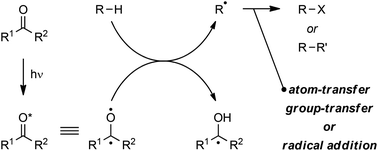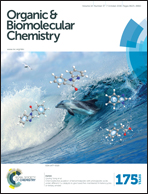The past, present, and future of the Yang reaction†
Abstract
Photoexcited ketones have diradical characteristics and are functionally similar to high-spin metal–oxo species that are frequently used to catalyze C–H oxidation. First discovered by Yang in 1958, photoexcited ketones can abstract a hydrogen atom from hydrocarbons inter- or intramolecularly. Coupling with atom-transfer, group-transfer, or radical addition, the Yang reaction can be used to achieve various types of C–H functionalization. We provide in this article an overview of triplet ketone-mediated or catalyzed C–H functionalization reactions.


 Please wait while we load your content...
Please wait while we load your content...